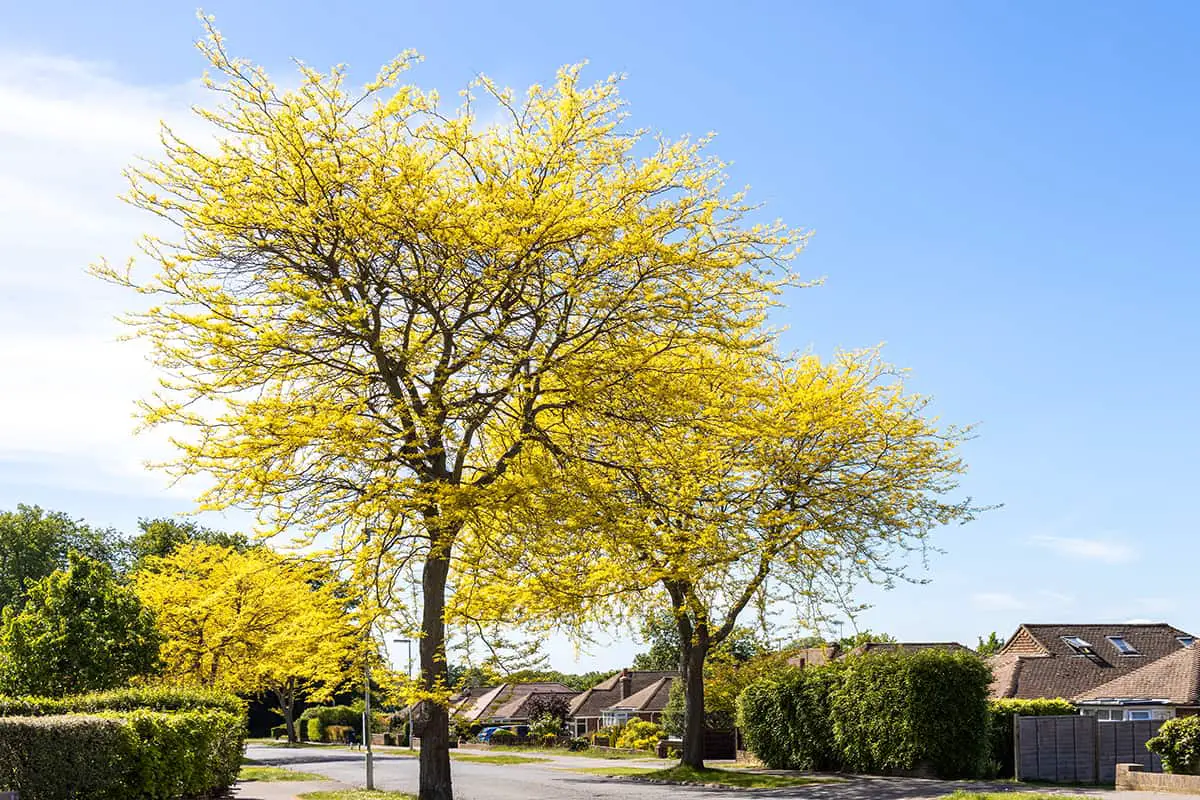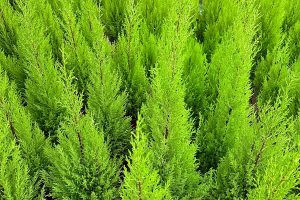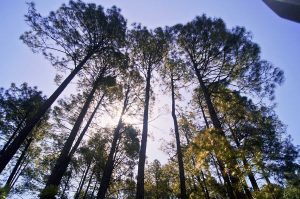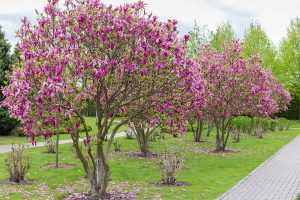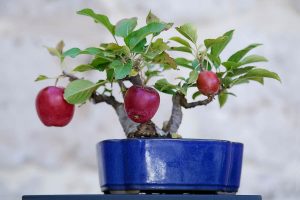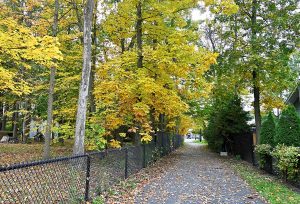Wildfires are a spontaneous type of fire which occur completely naturally. They happen in hot and dry climates where dried-out vegetation gets to such a high temperature that it spontaneously combusts, and the fire then ravages through trees on a mass scale.
The devastation caused by wildfires is severe, with the 2020 California wildfires destroying approximately 4 million acres of land and over 10,000 homes.
In areas that are prone to wildfires, one of the ways you can help to protect your home is by planting fire-resistant trees. This includes oak trees, fruit trees, and maple trees.
Table of Contents
What is a Fire Resistant Tree?
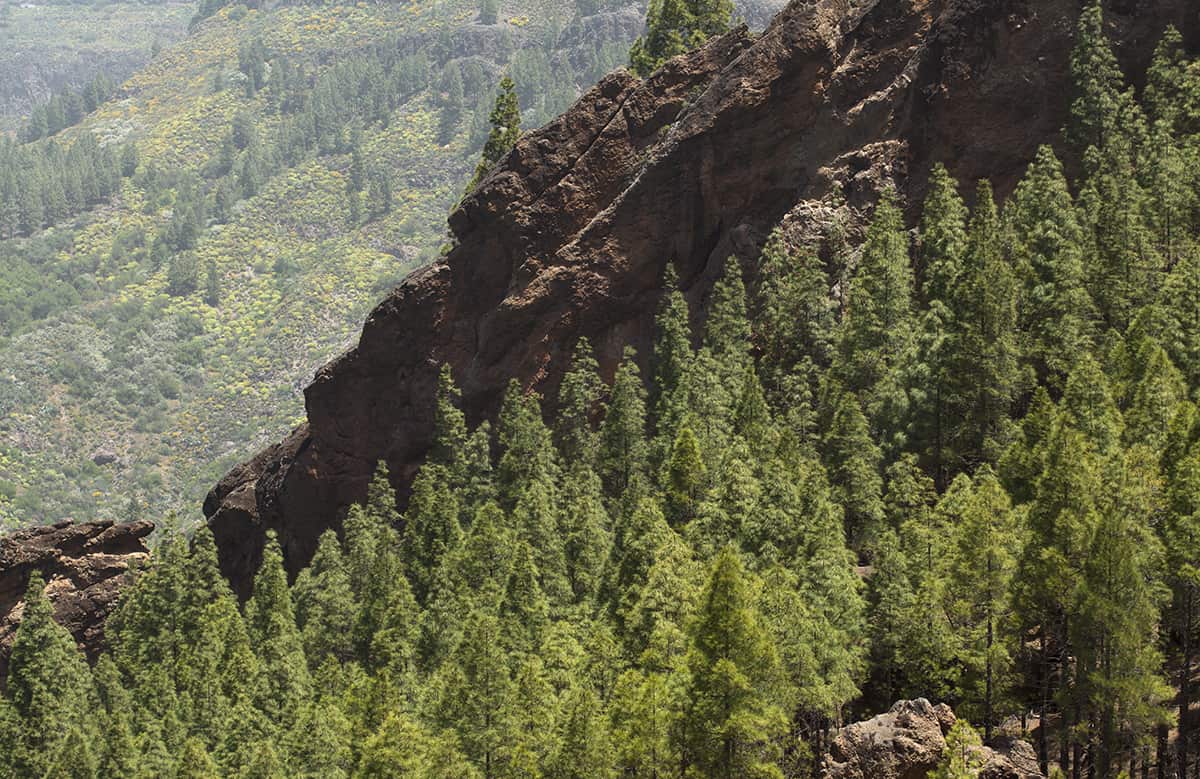
A fire resistant tree is a type of tree which shows some level of hardiness against fires. Since wildfires can destroy forests astonishingly quickly, many homeowners in fire-prone regions such as California have taken to protecting their homes by creating a protective barrier made up of fire resistant trees.
Fire resistant trees are not fire-proof. They will still burn, but it will take them longer to ignite compared to other trees, and they will burn at a slower rate to help slow down the path of a forest fire. Forests made up of highly flammable trees burn so fast that it can be impossible to contain a wildfire or get it under control. When forests are made of more fire-resistant trees, you stand a much better chance of getting the wildfire under some level of control.
Fire Resistant Tree Types
Bigleaf Maple
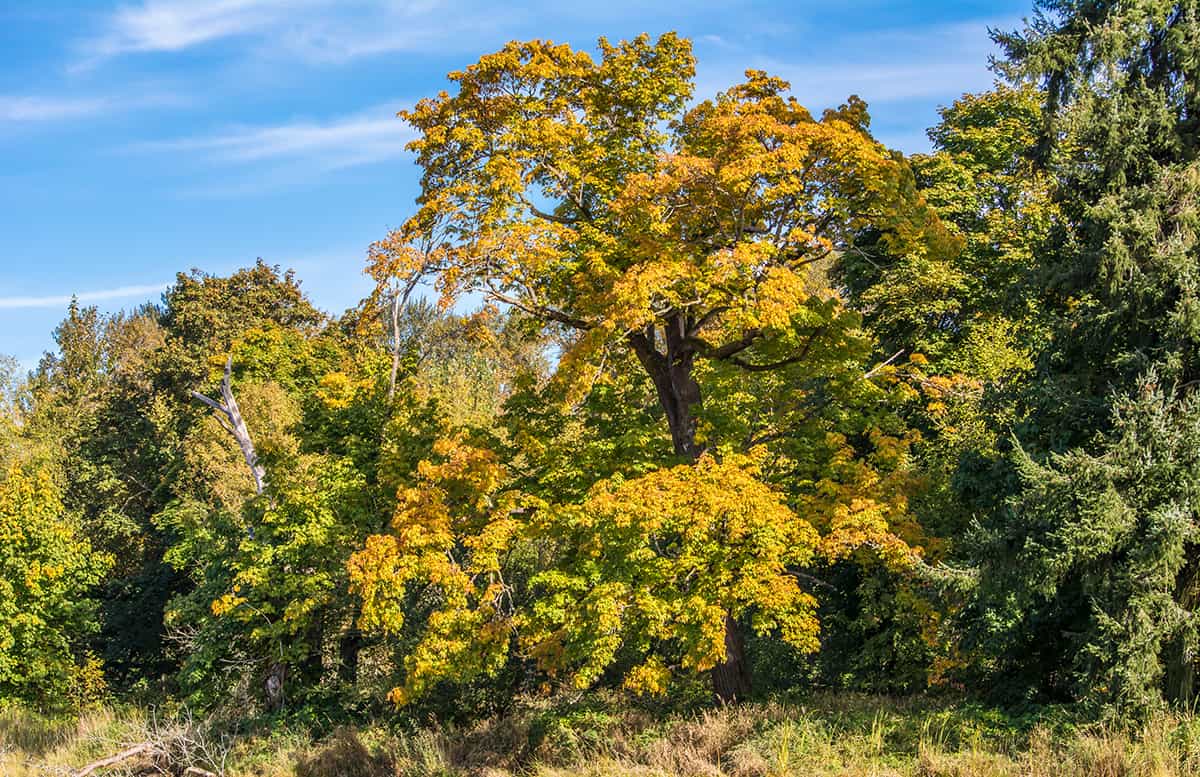
- Botanical name: Acer macrophyllum
- Common names: Bigleaf Maple, Oregon Maple
- Plant family: Sapindaceae
- USDA hardiness zone: 3 – 8
- Mature height: Up to 70 feet
- Mature spread: Up to 70 feet
The Bigleaf Maple is the largest type of maple tree in North America, and it is native to Washington, Oregon, California, and British Columbia. It works well as a fire resistant tree because it produces thick and large leaves which measure around 12 inches across.
These huge leaves are advantageous in slowing the spread of wildfires because they will be slow to ignite, and the height of these trees helps to ensure the fire doesn’t spread from the ground below. Bigleaf Maples are a good choice of fire resistant tree in California because they are native to this region, and therefore have evolved in the environment to have some tolerance of high temperatures and fire resistance.
Bigleaf Maple trees are a beautiful addition to any landscape, with oversized foliage emerging in deep red in the spring and developing to green through summer before taking on fiery shades of orange and yellow in the fall. They also exhibit clusters of drooping yellow flowers in the spring, which measure up to 8 inches in length, and emit a pleasant fragrance.
The Bigleaf Maple is a deciduous species which works well as a shade tree and privacy screen through spring and summer, and it is very important to local wildlife such as bees, rodents, deer, beavers, and elk.
This tree prefers to be grown in full sun or partial shade, and it will tolerate any types of soil that are consistently moist and well draining.
Honey Locust

- Botanical name: Gleditsia triacanthos
- Common names: Honey Locust, Sweet Locust, Thorny Locust, Honey Shucks Locust, Common Honey Locust
- Plant family: Fabaceae
- USDA hardiness zone: 3 – 8
- Mature height: Up to 100 feet
- Mature spread: Up to 80 feet
The Honey Locust tree is native to central North America, where it grows predominantly near to rivers and wetlands with moist soils. It is ideal for use as a fire resistant tree because it has a high moisture content which helps to minimize the chance of ignition, and it is also a very dense hardwood which takes a long time to burn, thereby slowing down the spread of rampant wildfires.
The overall look of the Honey Locust tree is very appealing. It has feathery leaves in an attractive shade of fresh green, which take on a bright yellow color in the fall. The crown of the tree has a graceful, spreading quality, and drooping clusters of small yellow flowers appear in the summer.
By early fall, the flowers develop into attractive red seed pods, which the tree can retain right through to winter. The fleshy and sweet seed pods are an important source of food for local wildlife, including raccoons, rabbits, squirrels, hogs, deer, cattle, and sheep.
Honey Locust trees should be grown in a position of full sun. They are drought tolerant once mature but prefer to be grown in moist, well-draining soils. Keep the tree well irrigated in order to maintain its fire resistance.
American Mountain Ash
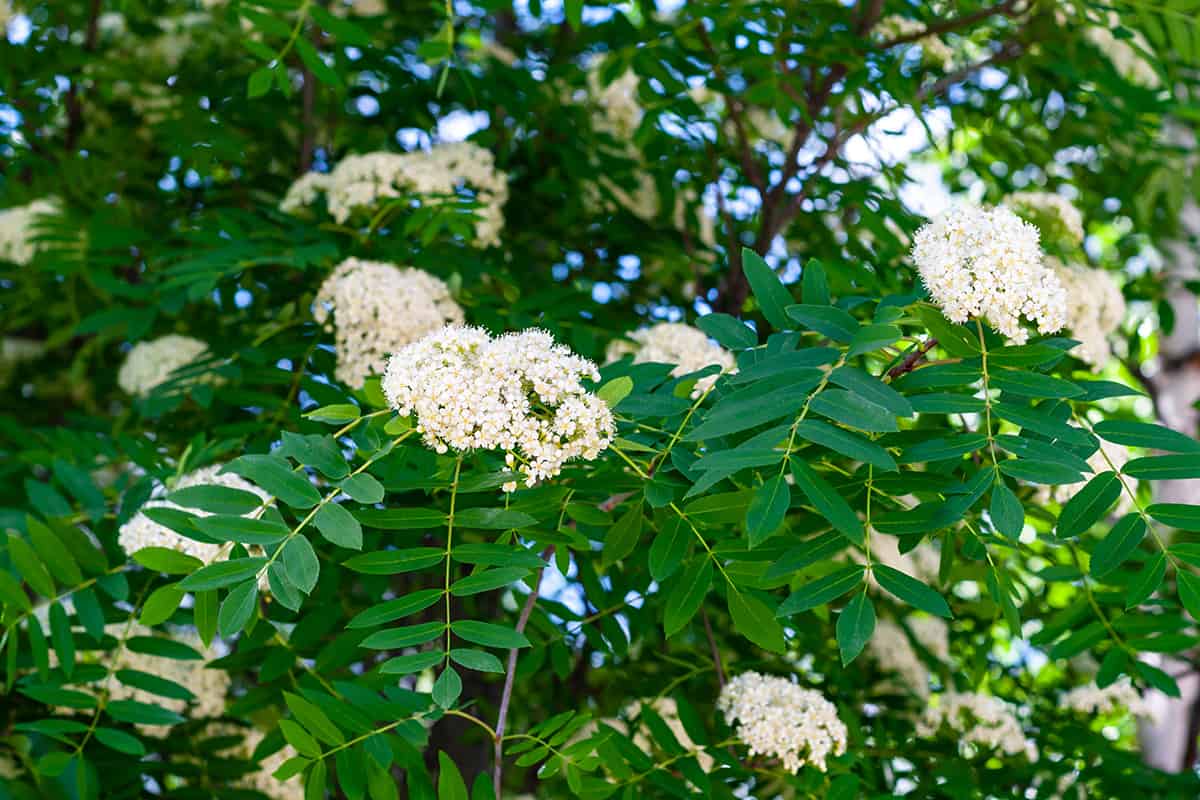
- Botanical name: Sorbus americana
- Common names: American Mountain Ash, Dogberry, Roundwood, Rowan Tree
- Plant family: Rosaceae
- USDA hardiness zone: 3 – 6
- Mature height: Up to 30 feet
- Mature spread: Up to 30 feet
This is a deciduous tree native to eastern North America. It produces dense clusters of attractive berries in the summer which are showy and attractive, but also help to provide some resistance to fire because the berries are fleshy and moist and will therefore struggle to ignite. The berries are red-orange and will remain on the tree into winter after the leaves have been shed unless devoured by migrating birds.
The foliage of the American Mountain Ash is dark green and develops to orange, yellow, and eventually red-purple in the fall. The bark of the tree is smooth when young but becomes more rough and scaly with maturity. Older American Mountain Ash trees will have a better resistance against fire due to the thicker bark and more dense trunk and branches. If the top of this tree gets burnt down by the fire, the remaining trunk will send out new sprouts so that it can regenerate.
This tree thrives in full sun and moist, well-draining soils.
River Birch
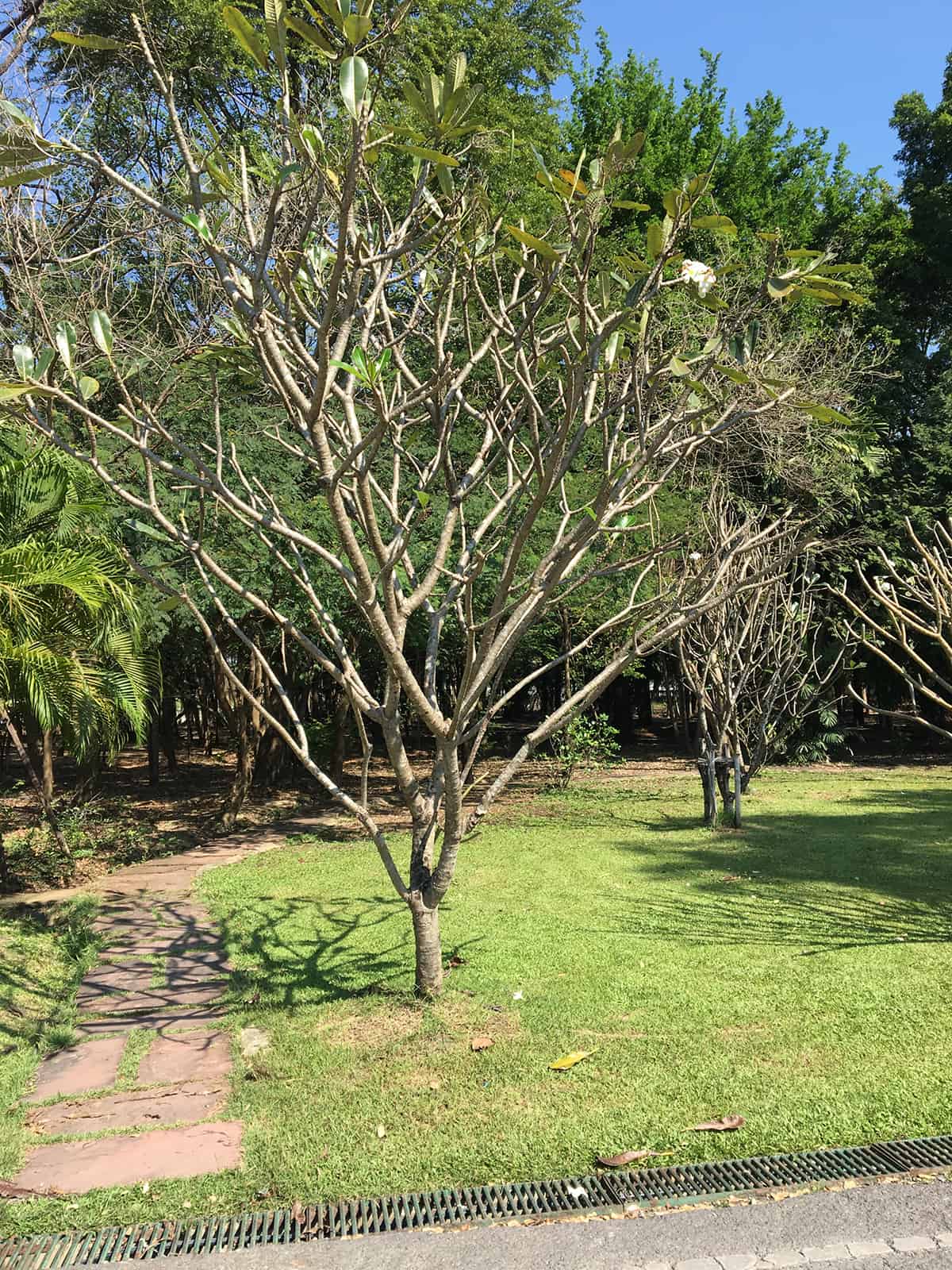
- Botanical name: Betula nigra
- Common names: River Birch, Black Birch
- Plant family: Betulaceae
- USDA hardiness zone: 4 – 9
- Mature height: Up to 70 feet
- Mature spread: Up to 60 feet
The River Birch is native to the Eastern United States, growing prolifically in swamps, floodplains, and wetlands. This is a tree that requires moist or wet soils to thrive, and its high water content helps it to maintain some resistance to fire. Studies on fire resistance have shown the River Birch to be a fire-safe tree since it will scorch rather than burn, unless put under extreme conditions. Mature, large specimens will be more likely to survive fire, and they are quick to send out new shoots following fire damage, which will help to maintain a protective environment.
River Birch trees are deciduous, with white peeling bark which sheds to reveal salmon pink curling flakes, later fading to black. Fire resistance has proven to be more effective on River Birch trees which have thicker bark. The tree has a pyramidal crown, and it grows rapidly and vigorously.
This is a good attribute for fire-safe trees, as they will quickly regenerate following a fire. The leaves of the River Birch are green and glossy through spring and summer, fading to yellow in fall before dropping to the ground. Their undersides are a shimmery silver color, which gives an attractive two-tone look to the tree.
This tree can be grown in semi-aquatic conditions or relatively dry soils since it is incredibly adaptable when it comes to soil. However, the River Birch grows best in moist and well-draining soils. It can be grown in full sun or partial shade.
Coast Live Oak
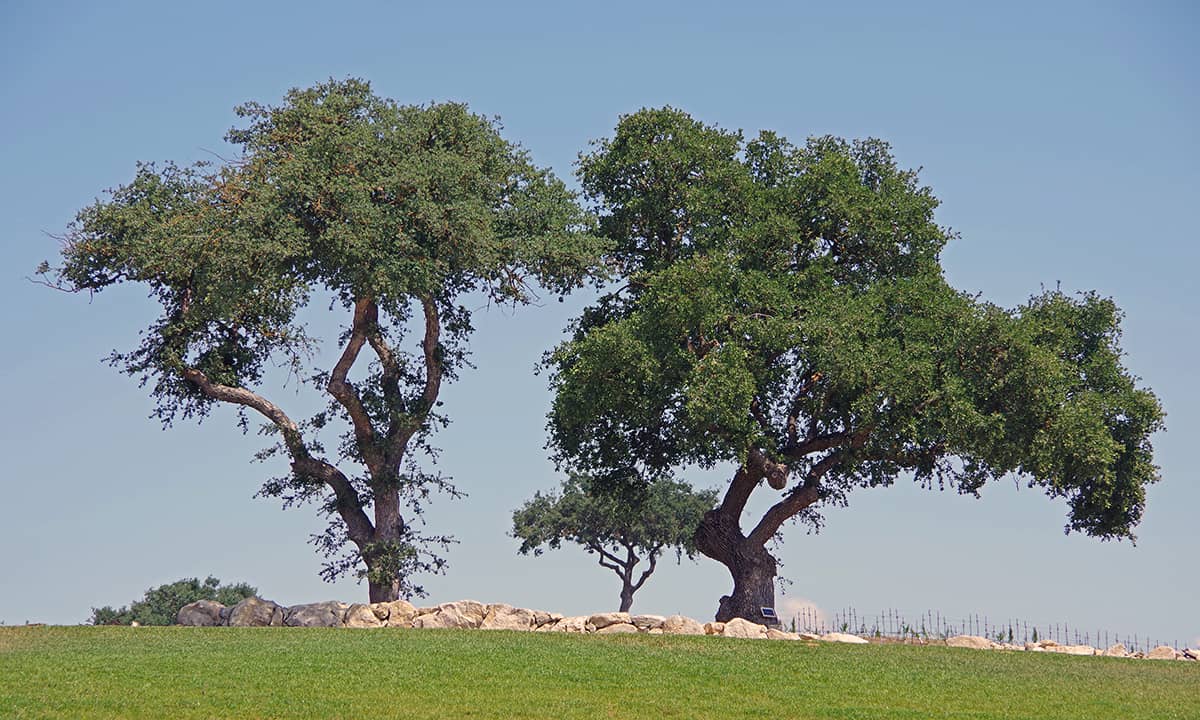
- Botanical name: Quercus suber
- Common names: Coast Live Oak, California Live Oak,
- Plant family: Fagaceae
- USDA hardiness zone: 9 – 11
- Mature height: Up to 50 feet
- Mature spread: Up to 50 feet
The Coast Live Oak is one of the best types of fire resistant tree, especially in California, because it is native to this area. This oak tree produces thick, leathery leaves, which are more likely to singe and scorch rather than ignite into flames. Even if the leaves do ignite, they will be very slow to burn due to their high water content and chunky depth. The bark of the tree is thick and gnarled, which provides good protection to the trunk because it will be reluctant to catch fire. In the event that the Coast Live Oak does ignite, the leaves, trunk, and bark will all burn very slowly. The wood of the tree is hard and dense, which means it will not burn easily.
The Coast Live Oak brings a lot to the landscape besides fire resistance. It is a picturesque evergreen that retains interest through every season, and it performs well as a windbreak and a shade tree. It is also useful in the erosion control of slopes and banks, and it produces acorns which are a source of food for small mammals.
The Coast Live Oak grows easily, performing best in full sun or partial shade. It will adapt to a wide range of soil conditions but prefers deep, well-draining soils which are kept moist. To maintain the best fire resistance, ensure that any plants growing beneath the tree are at least 15 feet in distance from the canopy. This will prevent what is known as a ‘fire ladder’, which can help low-spreading fires reach the upper parts of the trees.
How to Utilize Fire Resistant Trees
In some fire-prone areas, wildfires cause such devastation to communities, that many people are considering the possibility of chopping down all of the trees to simply eliminate the hazard. However, trees are important for local wildlife, shade, shelter, and the environment, so it makes more sense to utilize fire resistant trees to create a fire-safe habitat.
While many people in locations which are at high risk of fires may deem any trees as a potential risk, there are actually plenty of fire-safe trees which will slow down the spread of a forest fire, and keep it away from homes. In fact, fruit trees are so beneficial at preventing the spread of fires, that emergency fire crews are trained to use orchards as a natural fire break.
To make the best use of fire resistant trees in your neighborhood, ensure they are planted at least 15 feet from any buildings, and space them out so that there is a reasonable amount of space between each fully grown canopy; the canopies should not be close enough to touch each other.
Maintaining Fire Resistant Trees
Planting a fire resistant tree is not always enough to get the best out of it; you need to also engage in some care and maintenance. Trees that are well-watered will always have better fire resistance than those which have dried out, so be sure to keep on top of your irrigation, especially in the hotter months of the year.
Trees should be pruned annually so that any dead or damaged branches are removed, as these will be prime for igniting quickly. You should also thin out the underneath of the canopy, ensuring there are no low-hanging branches within 15 feet of the ground.
By removing the lower branches, you make it much harder for fires on the ground to spread upwards to the canopies of the trees. If you have deciduous trees, always clean up fallen leaves regularly, because dried out piles of leaves are like kindling in hot temperatures, and they will speed up the spread of a wildfire exponentially.
What Qualities Make a Tree More Resistant to Fire?
Fire resistant trees are those which have a higher water content than other trees. High water content will make it harder for trees to catch fire, and though they aren’t completely impossible to burn, they will scorch before burning and will burn more slowly.
Some of the best fire resistant trees are deciduous, which means they shed their leaves in autumn or winter of each year and send out new growth the following spring. Fire resistant trees typically have large, fleshy leaves, which will not succumb to fires as quickly as those with smaller, drier foliage.
